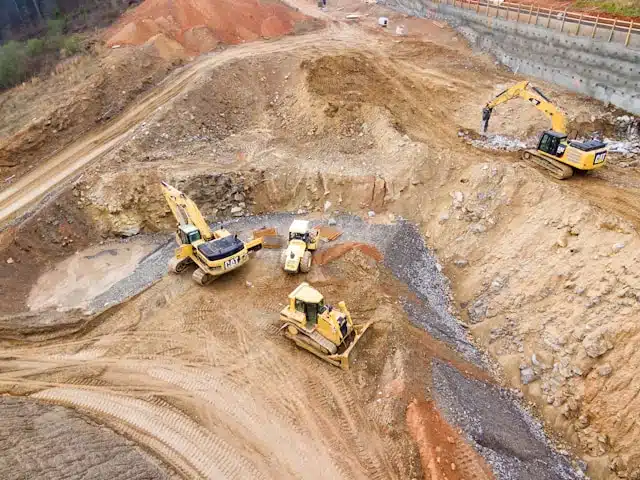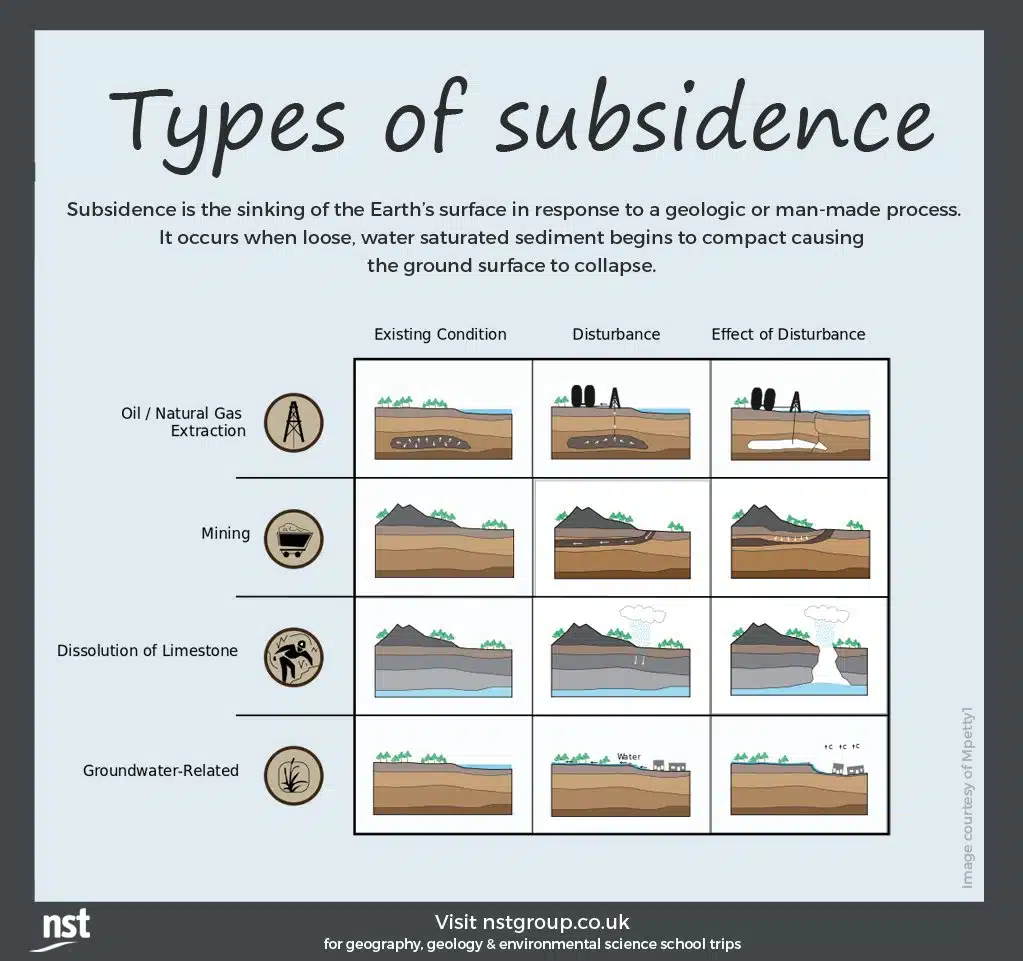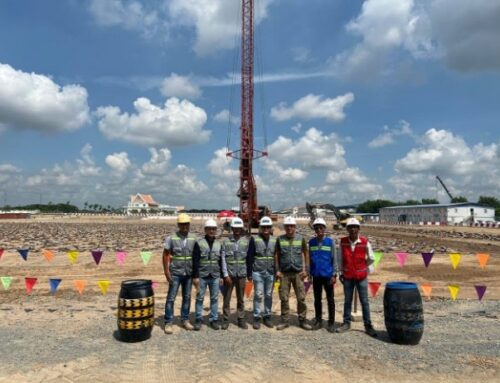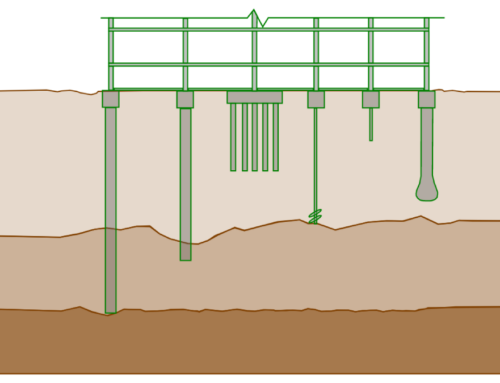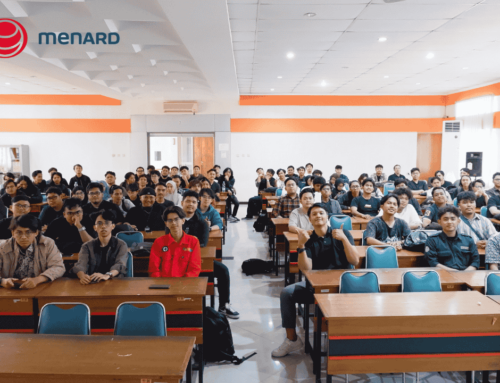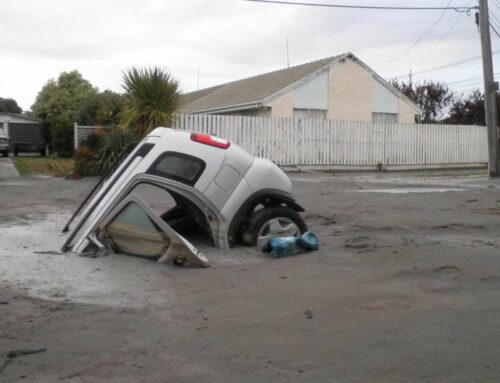Ground Subsidence
Imagine waking up one morning to find that the ground beneath your home or workplace has suddenly sunk, causing cracks in walls, uneven floors, and potentially catastrophic structural damage. This phenomenon, known as ground subsidence, can have devastating effects on buildings, infrastructure, and the environment. Understanding what ground subsidence is, its causes, effects, and how to prevent it is crucial for engineers, construction professionals, and environmental scientists. In this article, we will delve into the intricacies of ground subsidence, shedding light on its impact and the innovative solutions developed by Menard Asia to combat this geotechnical challenge.
What is Ground Subsidence?
Ground subsidence is the gradual or sudden sinking or settling of the Earth’s surface due to the movement or removal of subsurface materials. This geotechnical phenomenon occurs when the ground loses its ability to support the weight above it, leading to a downward shift. Subsidence can be caused by natural processes such as the dissolution of soluble rocks, soil compaction, or human activities like mining, groundwater extraction, and construction.
Ground subsidence has been a known issue for centuries, impacting civilizations around the world. Historical records show that cities, such as those in Asia and South East Asia, experienced subsidence due to the extensive use of groundwater and rapid urbanization. For example, the capital city of Indonesia, Jakarta, Parts of the city have sunk by more than 9 meters over the past century due to a combination of natural subsidence and groundwater extraction.
In modern times, ground subsidence has become a significant concern due to increased urbanization and industrial activities. Cities like Jakarta have seen dramatic subsidence rates, leading to severe infrastructure damage and heightened flood risks. The significance of understanding and addressing ground subsidence lies in its potential to cause extensive structural damage, disrupt ecosystems, and incur substantial economic costs. As urban areas continue to expand and resource extraction intensifies, proactive measures to assess and mitigate subsidence risks are essential for sustainable development.
Causes of Ground Subsidence
Ground subsidence can be attributed to a variety of natural and human-induced causes. Understanding these causes is crucial for developing effective mitigation strategies.
Natural Causes
1. Soil Composition and Properties
Different types of soil and rock have varying susceptibilities to subsidence. Soluble rocks like limestone can dissolve over time, creating voids and leading to subsidence. Similarly, loosely packed soils and those with high organic content can compress under the weight of overlying materials, causing the ground to sink.
2. Natural Compaction Processes
Natural compaction occurs when sediments, such as clay and silt, are compressed under their own weight or due to the weight of overlying layers. This process can lead to gradual subsidence over time, especially in delta regions and coastal plains where thick layers of unconsolidated sediments are common.
3. Erosion and Sedimentation
Erosion caused by water, wind, or ice can remove surface materials and destabilize the ground. Conversely, the accumulation of sediments in certain areas can add weight and pressure, leading to subsidence. River deltas and floodplains are particularly susceptible to these processes.
Human-Induced Causes
1. Mining Activities
Extracting minerals, coal, and other resources from the Earth can create underground voids such as what happened in Maceio, Brazil. If these voids are not properly managed, they can collapse, causing the ground above to sink. Historical mining regions often experience significant subsidence due to abandoned and unfilled mine shafts.
2. Groundwater Extraction
Over-extraction of groundwater for agricultural, industrial, or domestic use can lower the water table, causing the soil to compact and the ground to sink. This is a major issue in many urban areas where groundwater is heavily relied upon, such as Mexico City and Jakarta.
3. Construction and Urban Development
The weight of buildings and infrastructure can compress underlying soils, especially if the ground is not properly prepared or if construction occurs on soft or loose soils. Additionally, construction activities that alter natural drainage patterns can exacerbate subsidence by changing the water content and pressure in the soil.
By addressing both natural and human-induced factors, engineers and planners can better protect infrastructure and minimize the risks associated with this geotechnical challenge.
Case Studies of Ground Subsidence Events
1. Jakarta, Indonesia
Jakarta has experienced severe subsidence due to over-extraction of groundwater. Parts of the city have sunk by more than 9 meters over the past century. This subsidence has led to extensive structural damage to buildings, roads, and historical landmarks, and has exacerbated flooding during the rainy season.
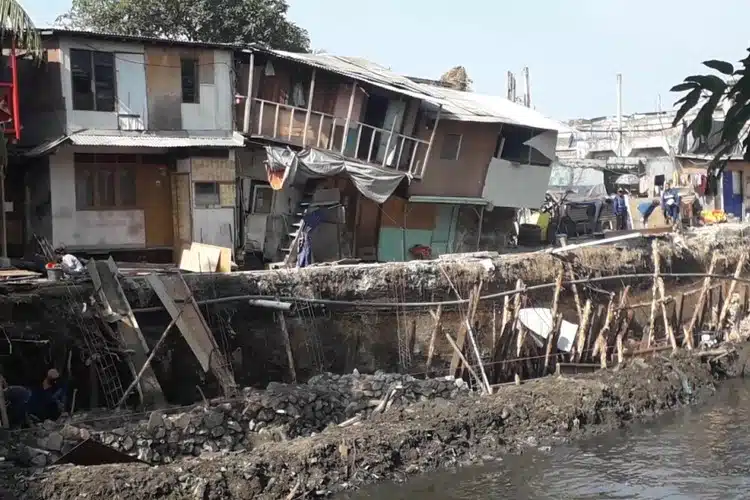
Image: Houses are affected by land subsidence along Ciliwung riverbank in Ancol, North Jakarta, Nov. 19, 2018. (source)
Comprehensive analysis from 1997 to 2005 has documented these subsidence characteristics and highlighted the urgent need for sustainable groundwater management practices. (source)
2. Ho Chi Minh City, Vietnam
In Ho Chi Minh City, subsidence is primarily caused by rapid urbanization and groundwater extraction. The city has experienced subsidence rates of up to 10 cm per year in some areas, leading to structural damage, increased flooding, and significant economic losses. Mapping of subsidence phenomena through radar interferometry techniques underscores the importance of integrating subsidence risk assessments into urban planning. (source).
3. Semarang, Indonesia
Semarang has faced subsidence issues due to a combination of groundwater extraction and coastal erosion. The city has seen subsidence rates of up to 7 cm per year, resulting in damage to infrastructure, increased flooding, and adverse environmental impacts. Monitoring and analysis have focused on identifying mitigation strategies to protect the city’s infrastructure (source).
4. Manila, Philippines
Metro Manila experiences subsidence primarily due to groundwater extraction and rapid urban development. Parts of the city have subsided by up to 6 cm per year, leading to structural damage, increased flood risk, and significant economic impacts. The slow-motion disaster of land subsidence in and around Metro Manila highlights the need for comprehensive groundwater management policies (source).
These examples illustrate the diverse and significant impacts of ground subsidence in Southeast Asia. The pressing question remains: how can engineers and policymakers effectively address these challenges to protect infrastructure and communities?
Effects of Ground Subsidence
Ground subsidence can have far-reaching impacts, affecting infrastructure, the environment, and economies. Understanding these effects is crucial for assessing the risks and developing strategies to mitigate the damage.
Structural Damage
Ground subsidence can cause significant structural damage to buildings, roads, bridges, and other infrastructure.
When the ground beneath a structure sinks, it can lead to cracks in foundations, walls, and floors. In severe cases, buildings may tilt or collapse entirely.
![Image: Damage due to land subsidence in Mexico City. (A) Vertical differential deformation [94]. (B,C) Damage to infrastructure](https://www.menard-asia.com/wp-content/uploads/sites/9/2024/11/image-5.jpeg.webp)
Image: Damage due to land subsidence in Mexico City. (A) Vertical differential deformation [94]. (B,C) Damage to infrastructure (source)
Roads and railways can become uneven, leading to hazardous conditions for vehicles and pedestrians. Utilities such as water, gas, and sewage lines can also rupture, causing leaks and further damage.
Environmental Impacts
Subsidence can lead to a range of environmental issues. It can alter natural drainage patterns, resulting in increased flooding or changes in water flow in rivers and streams.
Subsidence in coastal areas can exacerbate the effects of sea-level rise, leading to more frequent and severe coastal flooding.
Additionally, subsidence can disrupt ecosystems by changing the habitat conditions for plants and animals, potentially leading to loss of biodiversity.
Economic Consequences
The economic impact of ground subsidence can be substantial.
Repairing and rebuilding damaged infrastructure can be costly and time-consuming. In addition to the direct costs, there are often significant indirect costs, such as business interruptions, loss of property value, and increased insurance premiums.
In regions where subsidence is a recurring issue, it can deter investment and development, further hampering economic growth.
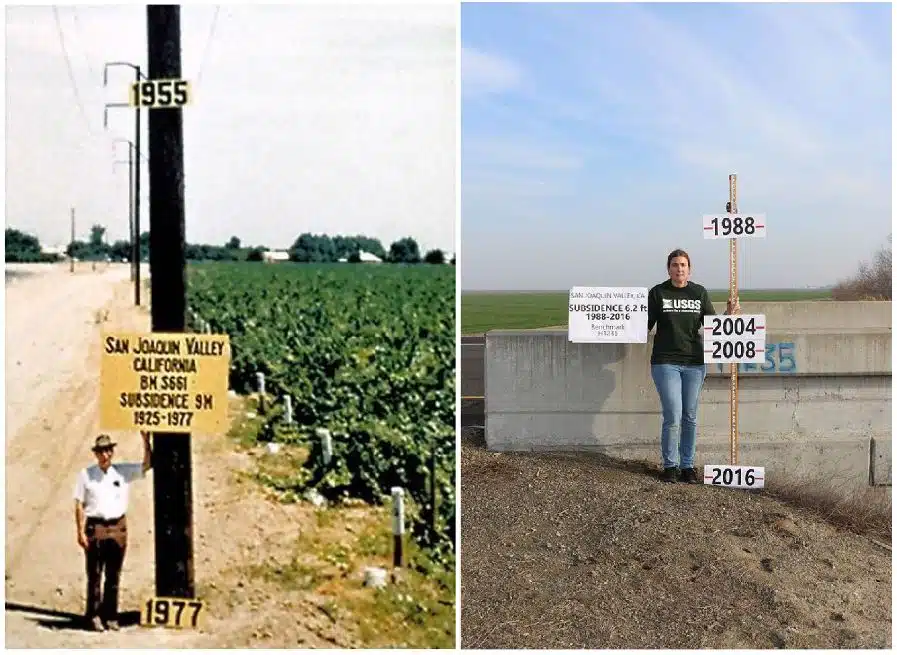
Image: Measures of land Subsidence in San Joaquin Valley (source)
Conclusion
Ground subsidence poses a profound challenge to urban infrastructure, environmental stability, and economic resilience. As cities around the world, particularly in Southeast Asia, continue to expand and industrialize, understanding and addressing this geotechnical issue becomes increasingly critical. Subsidence impacts are not isolated; they extend to everyday life, affecting the safety of buildings, roads, and critical utilities, while exacerbating risks of flooding and environmental degradation.
Tackling ground subsidence demands a comprehensive approach that combines advanced engineering, sustainable water management practices, and stringent urban planning. For regions like Jakarta, Ho Chi Minh City, and Manila, proactive policies such as controlled groundwater extraction, investment in subsidence monitoring technology, and the implementation of resilient infrastructure designs are essential steps forward. Moreover, educating communities and policymakers about the risks and prevention strategies can foster broader support for sustainable practices.
The work of companies like Menard Asia in developing and implementing solutions offers a beacon of progress in addressing ground subsidence. By employing innovative technologies and geotechnical expertise, they provide viable paths toward safer and more sustainable urban environments. As we move into the future, collaboration between governments, engineers, scientists, and local communities will be vital in mitigating the impact of ground subsidence and safeguarding cities for generations to come.

